Editor of this issue: Robertas Vitas
Copyright © 1998 LITUANUS Foundation, Inc.

|
LITUANUS
LITHUANIAN QUARTERLY JOURNAL OF ARTS AND SCIENCES
Volume 44, No.2 - Summer 1998
Editor of this issue: Robertas Vitas ISSN 0024-5089
Copyright © 1998 LITUANUS Foundation, Inc. |

|
THE ART OF IRENA RAULINAITIS
ALGIMANTAS KEZYS
Irena Raulinaitis is a chemist, but art has been a part of her life from an early age. One of her uncles was a well-known artist; his studio was a place of mystery where children were not allowed, but his woodcuts were familiar as book illustrations and as artwork decorating homes of family and friends; an acquaintance and an appreciation of print-making and graphics was something natural and self-understood.
Irena Raulinaitis was born in Lithuania. During World War II her family escaped to Germany and eventually came to the United States. When she was a high school student in Chicago, her art teacher recommended her for an art class at the Chicago Art Institute and a few years later a small water-color was exhibited in a juried show at the Smithsonian Institution in Washington, DC. Then followed university studies, marriage, children, a Master's degree in chemistry. A chance reading of Betty Edwards' "Drawing on the Right Side of your Brain" reawakened her interest in art. She started attending art classes in Glendale Community College: drawing, watercolor, sculpture, printmaking... In printmaking she knew she had found the discipline that was right for her. She started exhibiting in student shows, then went on to join local art groups, and eventually was accepted into the Los Angeles Printmaking Society. She has participated in solo, two-person and group shows in the Los Angeles area, in Flagstaff, Arizona, and with Galerija in Chicago. Her prints are represented in private collections throughout the United States.
She has no favorite technique. She feels that what is important is the communication of subjects and ideas. The techniques for expressing these follow as a matter of course. She has created a large series of callagraphs using dried flowers, torn bits of paper, string, feathers, lace, etc. to represent the transitional character of life, its joys and sorrows; she has printed images over images to evoke the complexity of concepts, of currents and countercurrents in our way of thinking and of perceiving; she has printed etchings together to show various aspects of a subject...
"Printmaking is such a free discipline - anything goes and everything is acceptable: etchings, woodcuts, color, black and white, collagraphs, monotypes, monoprints, viscosity prints, etc., etc., either singly or in combinations; you can do whatever your imagination and your inclination leads you to and never lack the means to express yourself."
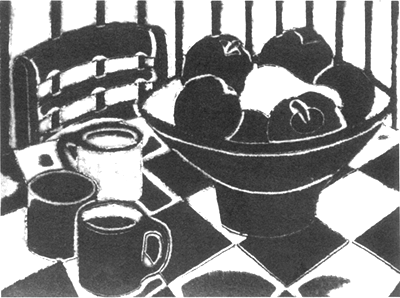
Bowl of fruit, 1993, 8.75" x 1.75", Viscosity print
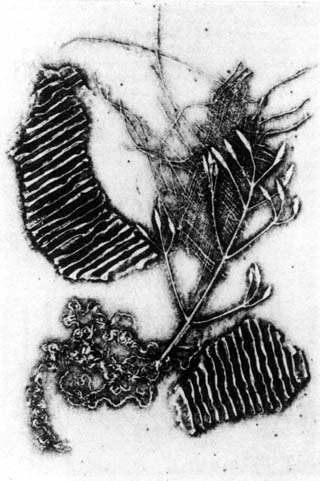
Trock'ne Blumen II, 1994, 7"x 4.75", Collagraph
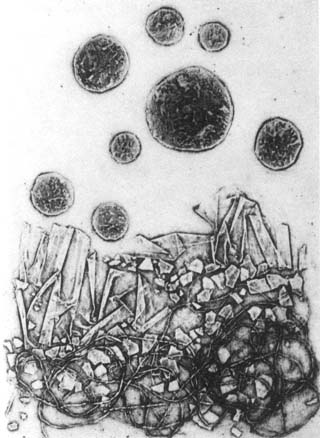
A distant planet and its moons, 1991, 12.75"x 9.25", Collagraph
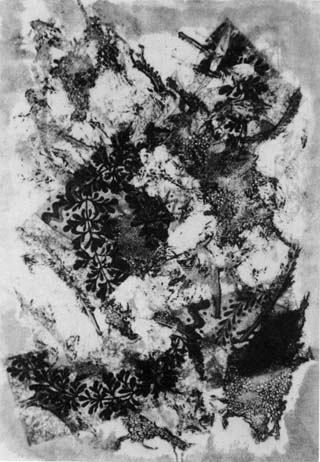
Lost dreams of love, 1993, 18.75"x 13", Etching / monoprint
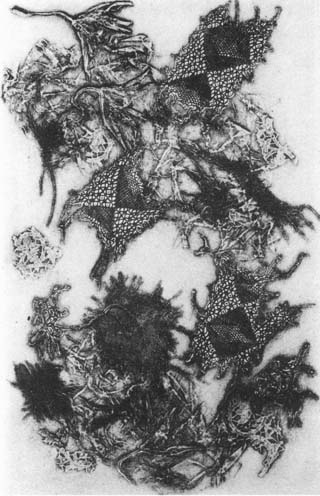
Trock'ne Blumen 31, 1994, 21.25"x 12.75", Collagraph
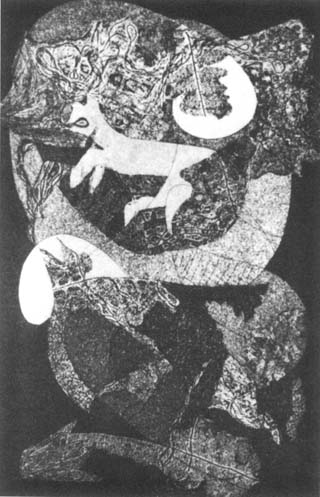
The cat, the bat and the moons, 1996, 8.5"x 5.75", Etching
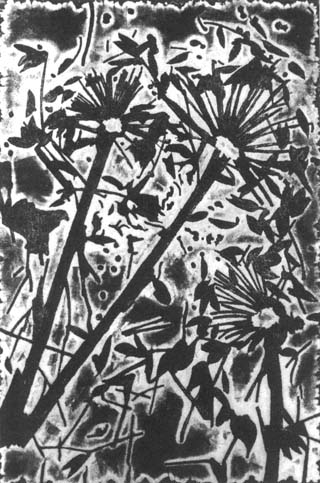
Autumn II, 1997, 17.5"x 11.75", Deep bite etching
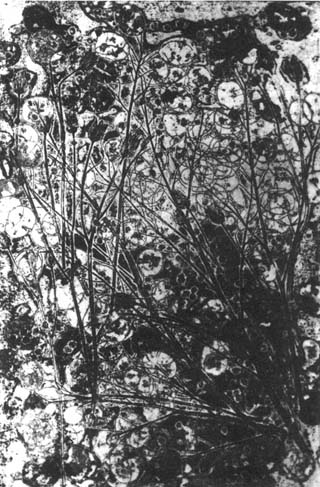
Silver dollars and columbines II, 1988, 18"x12", Soft ground etching